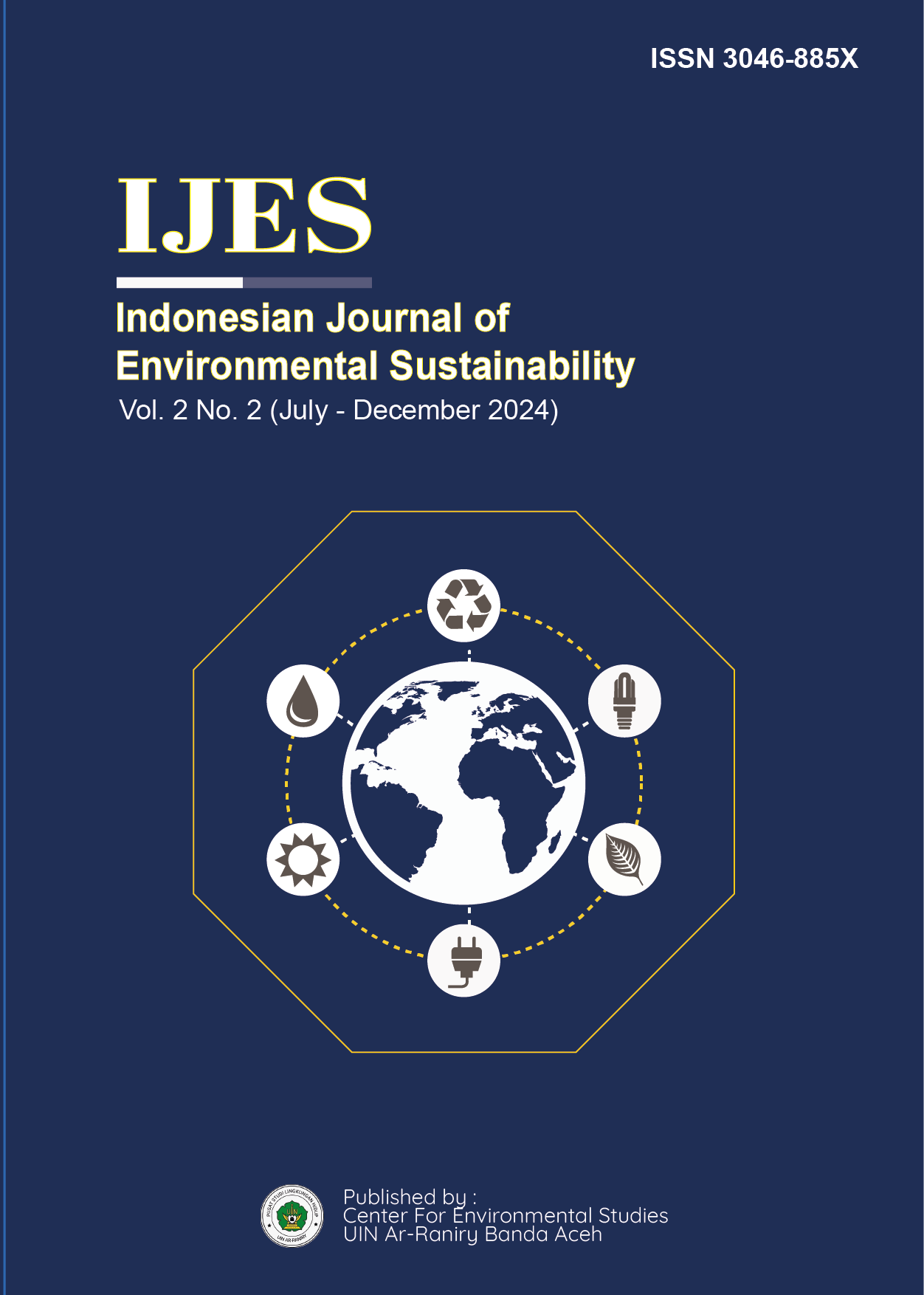EXPLORING THE ROLE OF SPECTRAL INDICES ON IMPROVING LAND COVER CLASSIFICATION ACCURACY BASED ON SENTINEL-2 SATELLITE IMAGERY IN BANDA ACEH CITY, INDONESIA
DOI:
https://doi.org/10.22373/ijes.v2i2.5957Abstract
The land cover on the Earth's surface is constantly changing due to natural and human activities such as settlements, agriculture, mining, natural hazards, and more. These changes will continue as long as life exists on Earth, making land cover change monitoring a never-ending task. Land cover classification involves defining the existing land cover on the Earth's surface using satellite imagery data. Random Forest is a popular classification algorithm used in remote sensing. The aim of this research is to determine the role of spectral indices in improving land cover accuracy using the random forest method. Twelve spectral indices were used, including the Normalized Difference Vegetation Index (NDVI), Normalized Difference Water Index (NDWI), Normalized Difference Built-up Index (NDBI), Global Environment Monitoring Index (GEMI), Urban Index, Advanced Vegetation Index (AVI), Normalized Built-up Area Index (NBAI), Modified Bare Soil Index (MBI), and others. By combining these spectral indices with the 12 Bands of Sentinel-2 Satellite Imagery, the accuracy of land cover classification increased from 87% to 91%. The results showed that NBAI played a more important role compared to other spectral indices, with 6%, followed by NDVI with 5.6% and Urban Index with 4.9%.
















